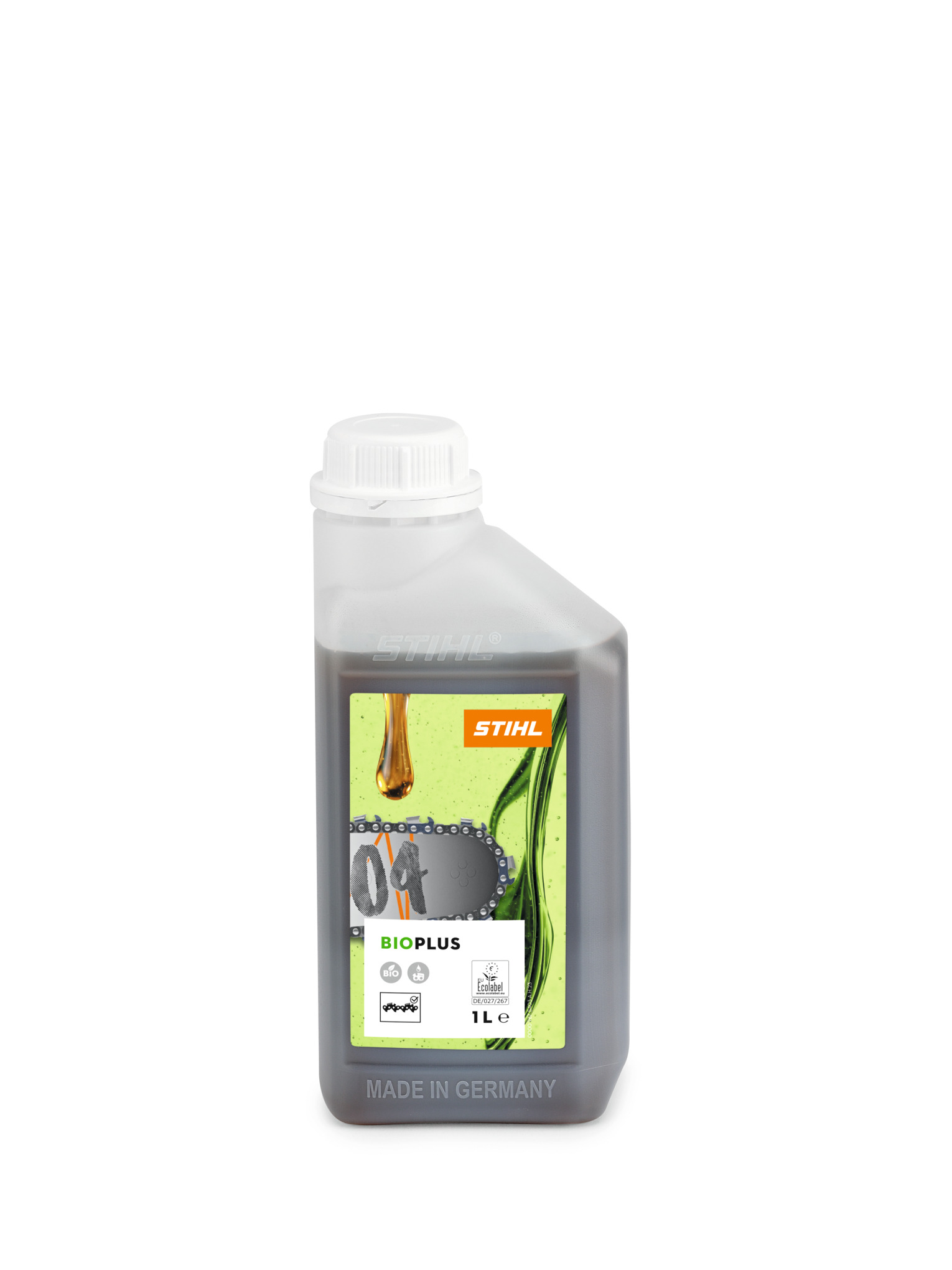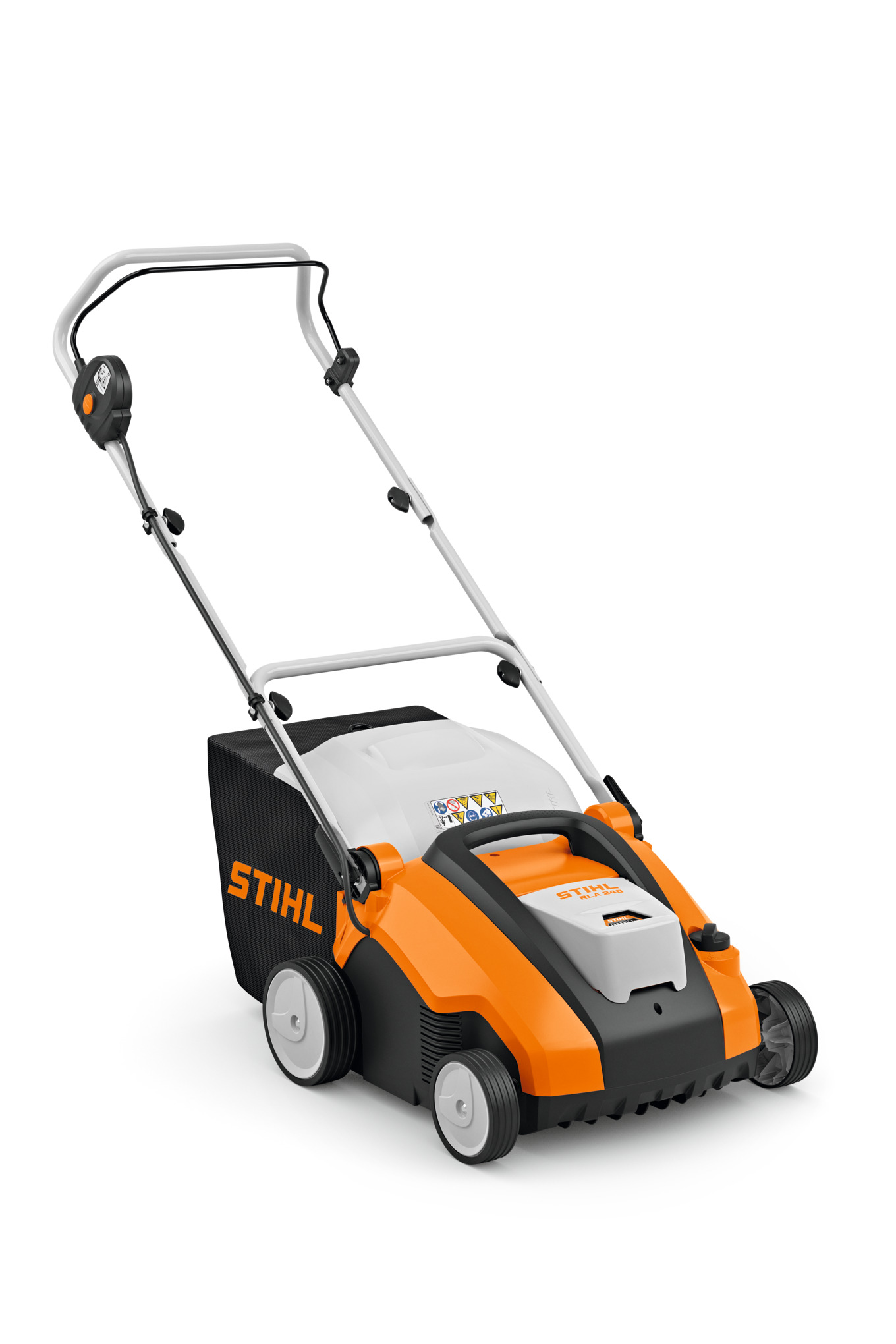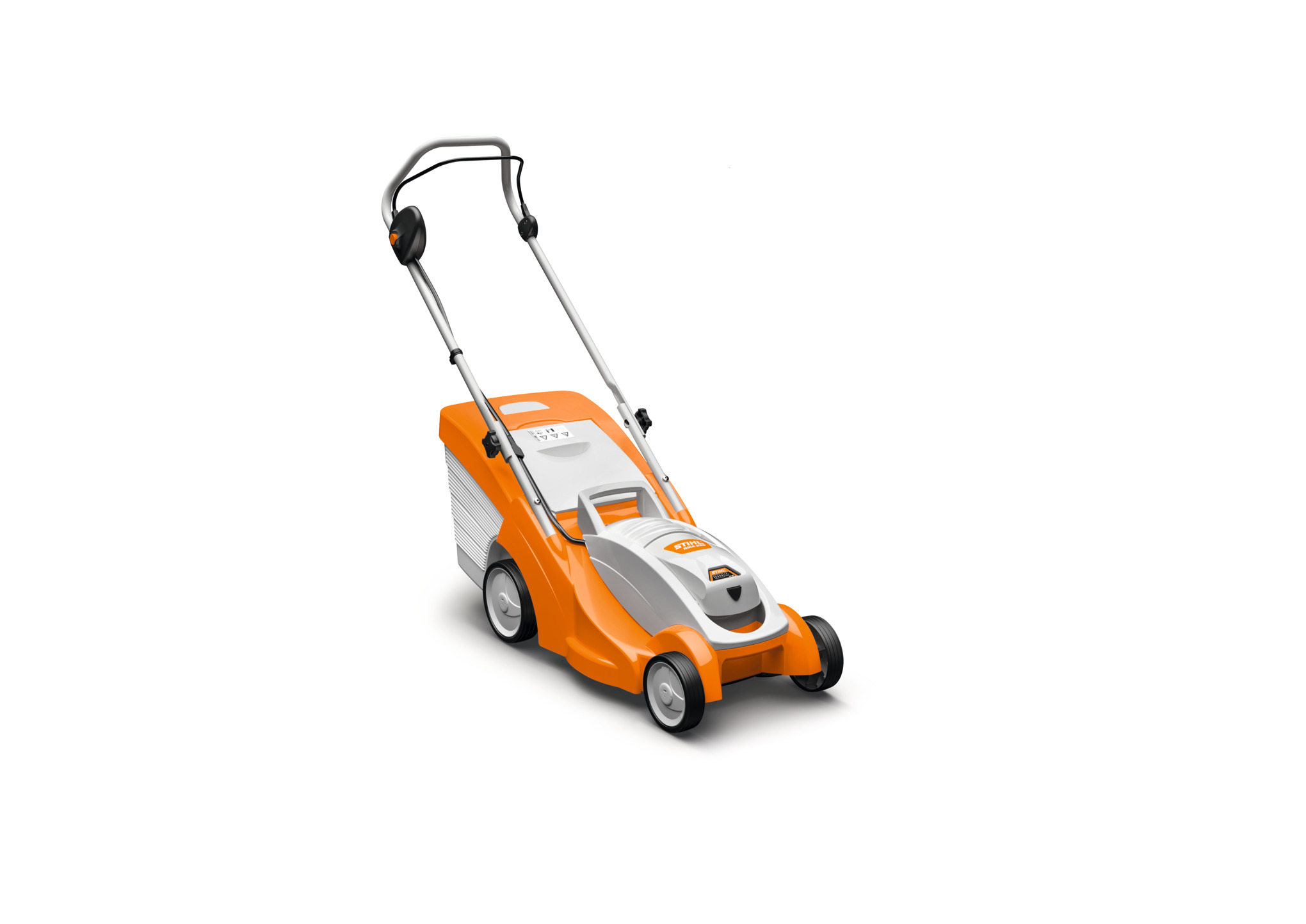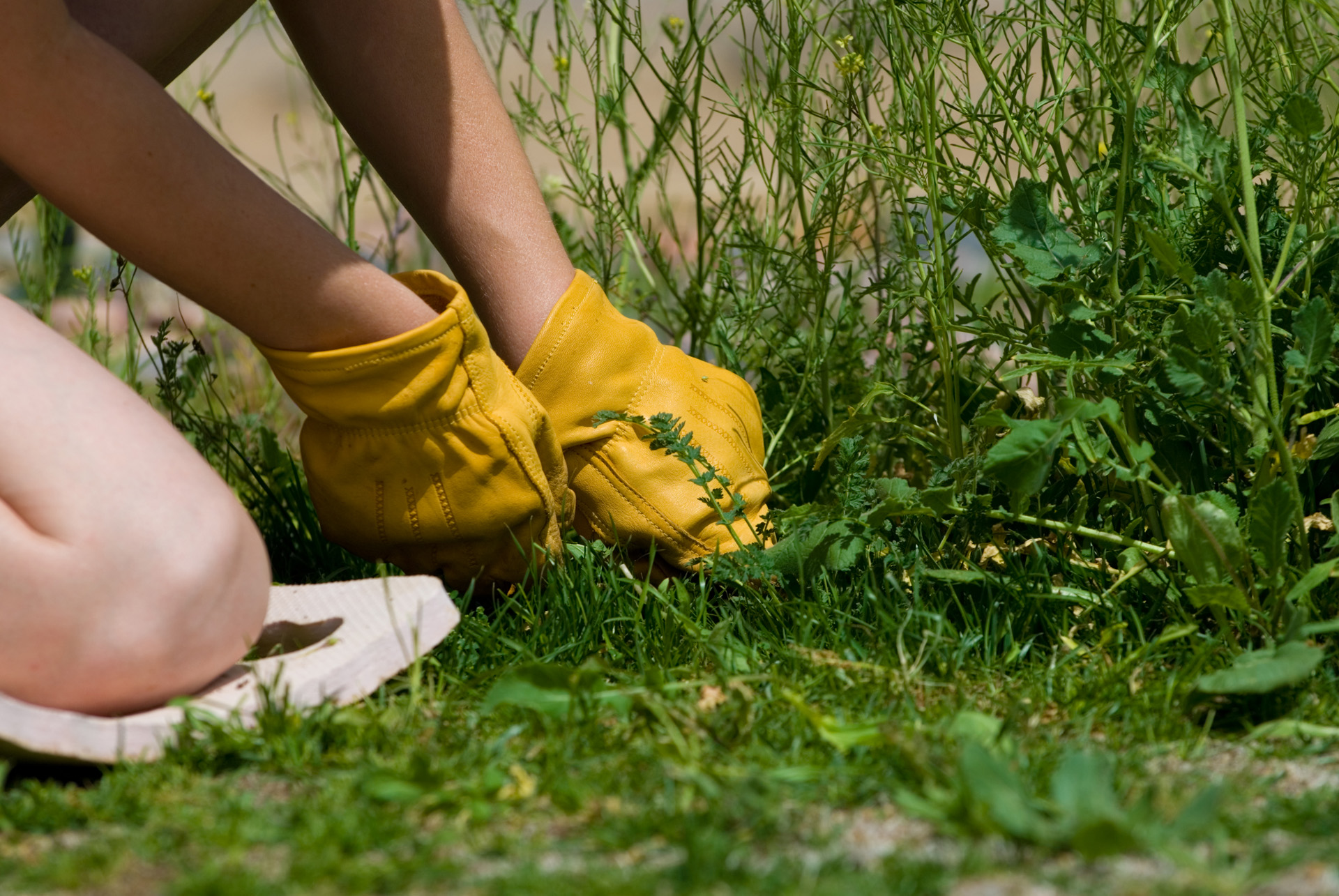Laying turf: simple steps to a great, green lawn
Are you planning to lay rolled turf? Let us show you the quick way to achieve the perfect lawn. Our guide also includes useful care tips for the best growth.
18.03.2025

Overview: laying turf
Preparation for laying turf: dig over, fertilise, roll and water the soil
Stagger the rows as you unroll the turf, to avoid cross seams
Cut off any overlaps and use to fill in gaps
Keep the laid turf moist for a good two weeks
Five to six days after laying, do the first mow
Then treat it like a normal lawn
When to lay rolled turf is mostly determined by availability. Though you can essentially lay turf any time between April and October, the job is best tackled from mid-May when the sun has warmed up the soil.
Rolled turf can be laid at any frost-free temperatures. Conditions are usually optimal from mid-May, and this is when rolled turf can get off to the best start. But in principle you can lay rolled turf any time from April to October.
The type of turf and size of the area are important factors in determining the cost of installation. For high-quality lawns you can expect to pay around ten times as much as it would cost to use grass seeds of a similar quality.
Soil that is deep, even and not compacted is best suited for rolled turf. That means the earth should ideally be neither purely sandy nor extremely loamy; for these soil types you can add soil improver to prepare for laying rolled turf. Rolled turf thrives on soil which is rich in humus, as it can store water optimally. Ensure that the soil is firm and very level before laying the rolled turf.
Firm, completely even ground is well suited to rolled turf. That’s why it is extremely important to prepare the soil for optimal results when laying turf. You’re sure to get it right with our step-by-step guide ↓.
Rolled turf instead of growing from seed: when is it worth using rolled turf?
If you lay your rolled turf correctly, your garden will be filled with lush greenery in no time at all. With a little work you can go from bare soil in the morning to a thick lawn by evening – ready to walk on immediately and suitable for full use after just a few weeks.
But this quick turnaround comes at a price, and rolled turf is around ten times as expensive as conventional seed sowing. So it is worth laying turf yourself if you want to instantly beautify your garden with green, or if you are repairing individual spots or areas that need to be usable and at full strength quickly.
Laying rolled turf: the materials you need
If you want to lay rolled turf yourself, you will need materials and tools to prepare the soil for your new turf as well as the freshly acquired rolls of turf themselves. Make sure you have the following ready before starting work:
- Rolled turf
- Cord and pegs
- Humus such as compost or potting soil
- For sandy soil: Soil improver such as bentonite or terra preta
- Organic lawn starter fertiliser
- Bowl
- Garden hose with lawn sprinkler and watering can with watering rose attachment
- Wheelbarrow
- Bucket for rubbish
- A narrow plank 60 cm long

- STIHL KM 56 RC-E with cultivator attachment
- Spade
- Metal rake
- Wooden rake
- Old kitchen knife with long blade
- Lawn roller
- Hammer
Working with high-performance power tools is fun and allows you to broaden your skills, which is great if you can rely on effective and safe protective clothing. Always wear personal protective equipment when working with a cultivator. This includes work boots, safety glasses, ear protection, gloves, visor and more. Find out more information in the owners manuals for your product. Before using your power tool for the first time, fully familiarise yourself with it and ensure that it is in flawless condition before each use. On request, your STIHL dealer will be happy to prepare your power tool for its first job, and will also advise you on models and sizes of protective clothing that you can try on at your leisure. Please remember that personal protective equipment is no substitute for working safely.
Laying turf with the right equipment
Instructions: how to lay turf properly
From preparing the soil to maintaining your optimally grown green space, our instructions show you exactly how to prepare the soil for rolled turf and what you need to consider when laying it.
STIHL professional tip: First take care of preparing the soil for rolled turf and then order the rolls. This will allow you to immediately lay the turf when it is delivered, and keep storage times as short as possible.
Before laying your lawn, first stake out the area with pegs. This means you will always have an overview and can work precisely. A hammer will make it easier to drive the pegs in.

Remove the old grass and any taproot weeds, as these will continue to grow even if you lay rolled turf over them. The more thoroughly you remove taproot weeds, the fewer weeds will later grow through your rolled turf. Then rake the surface.

Use a spade to dig over the entire area on which you want to lay the rolled turf. Have you brought any rocks or other debris to the surface? If so, simply rake them away with the metal rake, together with any grass and root remnants.

Now take the wooden rake and level the soil by flattening any visible hills and bumps and pushing loose soil into any pits and dips you can still see. Use the full length of the rake handle so you tread on as little of the loose soil as possible during levelling. Use the wooden rake to remove any footprints behind you and collect the last remaining roots.
STIHL professional tip: Rolled turf is about two centimetres thick. To ensure that the edges of the lawn are flush with patios or garden paths later on, you should level the soil at the edges to the appropriate depth.

Next, move the roller over the levelled surface, first from front to back and then again from side to side. This will firm the soil and ensure your feet leave no visible marks behind. The best way to prepare the soil for rolled turf is by pushing the roller rather than pulling it.

Apply humus such as potting soil or sieved compost to the rolled area. Do this by first distributing the humus in several small heaps around the area and then distribute it evenly over the surface of the soil using a wooden rake.
Next, spread lawn starter fertiliser and, if you have sandy soil, soil improver – terra preta or clay minerals such as bentonite are suitable for this. When spreading, always follow the manufacturer’s instructions in order to ensure the soil is optimally supplied with nutrients.

Use the STIHL KM 56 RC-E KombiEngine with tiller to ensure the top soil is as fine and crumbly as possible and to work in the starter fertiliser. This tool makes this step easy, even with hard or loamy soils. Important: Always wear personal protective equipment when working with a tiller.

Use the roller again to compress the soil, detect any last possible unevenness and then eliminate it.
Lightly roughen the soil surface with the wooden rake after rolling; make sure you only disturb the top layer of soil so that the rolled turf will root well after it is laid.
If the soil is very dry, water the area evenly with a watering can with a rose head or a sprinkler.

Now you can lay the rolled turf. Start in a corner of your garden and unroll turf in long rows. If the area has a straight linear border such as a fence or terrace, start parallel to it. Work your way forward, one roll at a time.
Do you want to lay rolled turf alongside a patio? Then ensure that the rows of unrolled turf run parallel to it for a seamless transition. If your lawn has curved edges, leave a small gap when unrolling the strips and then fill it with offcuts later on.

For a harmonious overall look, lay the rolls in offset rows; think about how bricks are arranged in a wall. Avoid overlapping turf, seams and especially cross seams, where the turf dries out quickly and therefore grows poorly.
You can use the wooden rake to close any seams between rolls you have laid: either pull a strip of turf slightly away or push it forward a little with the back of the wooden rake.

Cut off any overhangs and angled pieces with a knife after laying the rolled turf. Like a carpet, the lawn can be cut precisely to size in awkward corners. Use a narrow plank as a ruler for straight cuts. Offcuts can be used for filling gaps, for example at curved edges.

Run your roller across the finished lawn in the direction perpendicular to how you have laid the turf strips. This ensures optimal soil contact, so that the lawn can grow well. Then keep the soil moist but not wet for a good two weeks. During this time you should water the area daily.

Depending on the length of the grass, you can mow your self-laid lawn after just five to six days.

Maintaining rolled turf properly
Correct soil preparation helps you lay the foundations for proper growth. But to ensure that your lush greenery keeps looking good in the long term, new turf requires the right care at the right time once it has been laid. Once fully grown, maintenance for rolled turf is identical to that of lawns grown from seed. Depending on the manufacturer, starter fertiliser is effective for around four to six weeks. After this, you can fertilise the lawn as you would any other lawn.
You should fertilise rolled turf for the first time around four weeks after laying it. Then, fertilise your rolled turf lawn three times a year – with long-term organic fertiliser at the beginning of May and again in July, then with autumn fertiliser in September.
You can walk on the turf immediately after installation if you are careful. However, it takes five to six weeks for the rolled turf to be suitable for full utilisation.
The first time you can mow a rolled turf lawn depends on the length of the grass. In general you can mow rolled turf around five to six days after laying. For the first six weeks, however, you should not mulch mow, as the soil life still needs to build up.

Watering turf correctly
Newly laid turf should be kept moist, especially in the first two to three weeks after installation. In hot weather you may need to water it twice a day. Check that the first few centimetres of soil are also damp by lifting a corner of the rolled turf. During this early phase, you will need to apply around eight litres of water per square metre every day. Later, however, the fully matured turf will only need 15 to 20 litres of water per week – just like any other lawn.
STIHL professional tip: Though you should water your rolled turf well immediately after installation, do not keep it soaking wet. Excessive moisture will make the surface inaccessible, causing footprints to leave behind dips that are difficult to correct. If the lawn has too little water on the other hand, the strips of turf can contract and form unsightly seams which only grow together very slowly.
Scarifying and sanding a rolled turf lawn
You should not scarify a turf lawn in the same year as you lay it. You can scarify the area as needed from the following spring, as you would any other lawn.
Use a mower with a collection box to mow the area until the rolled turf has grown. During the first five to six weeks, the soil life needs to build up before it can process the grass cuttings produced by mulching.
If you prepare the soil optimally before laying the rolled turf and follow our care tips, you will create the ideal conditions for a sustainable, lush green lawn in your garden that is beautiful to look at.






